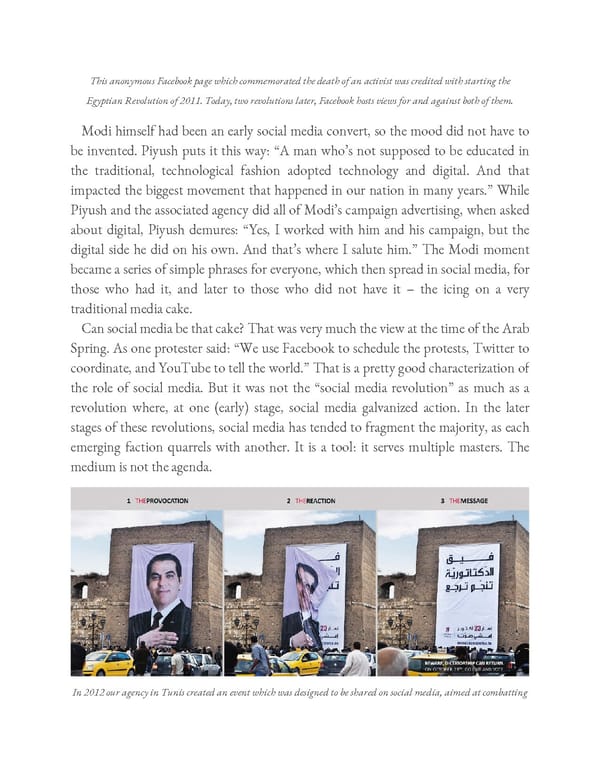This anonymous Facebook page which commemorated the death of an activist was credited with starting the Egyptian Revolution of 2011. Today, two revolutions later, Facebook hosts views for and against both of them. Modi himself had been an early social media convert, so the mood did not have to be invented. Piyush puts it this way: “A man who’s not supposed to be educated in the traditional, technological fashion adopted technology and digital. And that impacted the biggest movement that happened in our nation in many years.” While Piyush and the associated agency did all of Modi’s campaign advertising, when asked about digital, Piyush demures: “Yes, I worked with him and his campaign, but the digital side he did on his own. And that’s where I salute him.” The Modi moment became a series of simple phrases for everyone, which then spread in social media, for those who had it, and later to those who did not have it – the icing on a very traditional media cake. Can social media be that cake? That was very much the view at the time of the Arab Spring. As one protester said: “We use Facebook to schedule the protests, Twitter to coordinate, and YouTube to tell the world.” That is a pretty good characterization of the role of social media. But it was not the “social media revolution” as much as a revolution where, at one (early) stage, social media galvanized action. In the later stages of these revolutions, social media has tended to fragment the majority, as each emerging faction quarrels with another. It is a tool: it serves multiple masters. The medium is not the agenda. In 2012 our agency in Tunis created an event which was designed to be shared on social media, aimed at combatting
 Ogilvy on Advertising in the Digital Age Page 325 Page 327
Ogilvy on Advertising in the Digital Age Page 325 Page 327